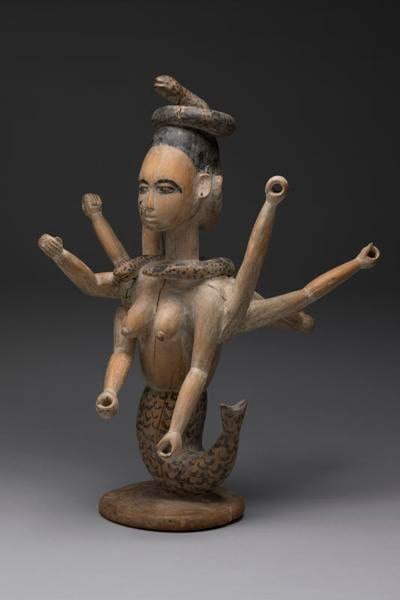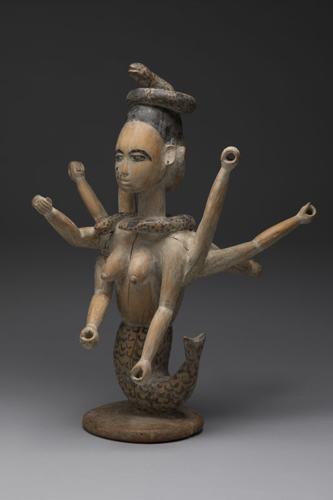In January, the New Orleans Museum of Art opened a retrospective of globally acclaimed Kenyan artist Wangechi Mutu. As part of this exhibition, I worked with the artist to select a number of works from NOMA’s historic African art collection for their relationship to the artist’s intent, ability to speak to lived experiences in the wake of colonial impact, or share spiritual or human interconnections.
This fantastical, multiarmed Mami Wata (“Mother Water”) figure was selected to accompany Mutu’s first large-scale bronze, "Water Woman," which might be understood as Mutu’s take on Mami Wata and other feminine water-dwelling deities who developed alongside the spread of trade and colonization.
Found throughout Africa and the Atlantic world, Mami Wata’s name derives from pidgin English, a language that developed to facilitate commerce. Recognizable as a fish-human hybrid and often depicted with snakes, she is known in coastal parts of Mutu’s native Kenya, as in the Afro-Atlantic world, as a deity who can bring good or bad fortune.
The origins of her visual representation can be traced to a late 19th-century German lithograph of a female snake charmer, which appeared in an Indian calendar that circulated widely in West and Central Africa. Testifying to the creativity with which Africans respond to imported ideas and images, Mami Wata’s iconography links her great beauty and foreignness to her ability to provide wealth and protection in an increasingly precarious world.
After all, water is often considered the gateway to the otherworld, and any creatures able to traverse both — like fish, mermaids and snakes — are especially revered.


